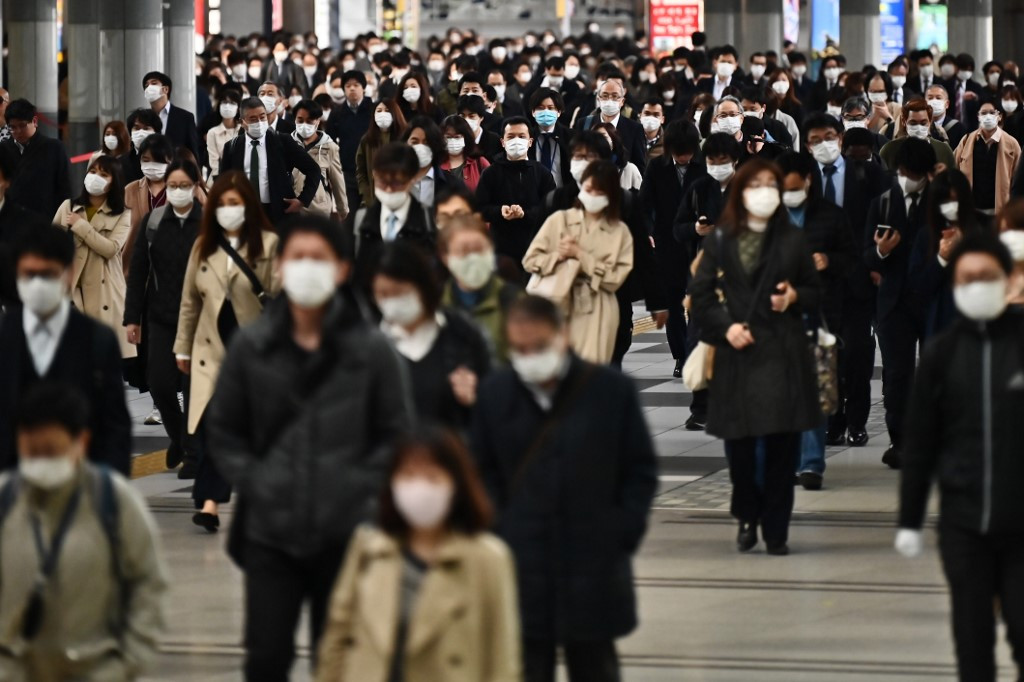Popular Reads
Top Results
Can't find what you're looking for?
View all search resultsPopular Reads
Top Results
Can't find what you're looking for?
View all search resultsCities are crucial to fighting the coronavirus pandemic
Learning from the coronavirus and past pandemics, the significance of cities at the forefront of pandemic preparedness cannot be emphasized enough.
Change text size
Gift Premium Articles
to Anyone
I
n early April, two major Asian cities faced grave challenges posed by the coronavirus pandemic. On April 5, Tokyo recorded its highest single-day surge of coronavirus cases on record, passing the psychological barrier of 1,000, while Singapore breached this number on April 1. Unlike Singapore whose unitary city-state government can enact measures to promptly abate further escalation of the situation, Tokyo and other major Japanese cities have relied mainly on advice given to their citizens to stay at home during the period of upsurge in coronavirus cases.
The constraint faced by governors in Tokyo and Osaka to act before the prime minister has declared a state of emergency may appear perplexing for outside observers, save the earlier case of Hokkaido, which went ahead on its own. However, it constitutes a classic example of what public health researchers regard as insufficient authority by local governments to institute response measures promptly.
In some countries, we see just the exact opposite where cities had trail-blazed paths where their national governments failed or were slow to act. Take the controversial facemask-wearing policy in public places or on public transportation to stop the spread of the coronavirus – we see at least three kinds of scenarios, as described below.
Prague was the first Western city to practice mask wearing in public – announced as early as March 17 – and the Czech Republic followed suit two days later. This is an example of a capital city setting influential public health policy embraced subsequently by the whole country in a short period of time.
Jena in the eastern part of Germany currently is the lone city that requires facemasks when going out to the supermarket or traveling. It followed the example of neighboring Austria where wearing masks is required and is the first local authority to take heed of scientific advice from Germany’s Robert Koch Institute for Infectious Diseases despite inaction at the national level.
The US cities of New York, Los Angeles and Laredo, Texas constitute another category of examples where, at the national level, the scientific agency Centers for Disease Control (CDC) has revised its policy in support of wearing masks but national consensus to implement it is lacking. These city authorities exercised their will to put in place contextually appropriate solutions in a timely manner.
Learning from the coronavirus and past pandemics, the significance of cities at the forefront of pandemic preparedness cannot be emphasized enough. In a recent paper published in Lancet Infectious Diseases, a group of international public health policy researchers quoted an investment gap in urban pandemic preparedness of US$4.5 billion per year, which is tiny in comparison to expected pandemic costs of US$570 billion per year.
Given that more than half of the world’s population live in cities and that 600 cities altogether contribute to two-thirds of the world’s GDP, it comes as no surprise for the World Economic Forum (WEF) to advocate setting up a “pandemic preparedness index” to assist in planning and response to pandemic outbreaks. It cannot be assumed that advanced cities in the developed world are more prepared in this respect because a recent news survey of the 15 largest US cities revealed many deficiencies including lack of transparencies in making such pandemic response plans known to the public, lapses in updating and underfunding.
In the Southeast Asia region, getting our urban centers to prepare for pandemics cannot be understated. The region is home to two of the world’s largest urban agglomerations that also serve as national capitals – Jakarta and Manila. In the COVID-19 crisis, these two megacities were the first to declare a state of emergency and lockdown in their respective countries, in addition to sustaining the highest number of confirmed cases and fatalities from the outbreak in proportion to their population sizes, densities and connectivity to other parts of the country and the world.
The challenges and lessons learned include realizing that sealing off the commercially important but epicenter of disease outbreak is insufficient as its ramifications extend deeply into other parts of the country. Such was the case of the lockdown in Manila, which evolved quickly into the Enhanced Community Quarantine for the entire island of Luzon. Another aspect is policy coordination on common measures to combat the pandemic among regions contiguous to the capital, as experienced by Greater Jakarta constituent cities for imposing large-scale social restrictions (PSBB) across each other’s borders.
While all eyes are fixed now on when the coronavirus pandemic will peak, something for sure is that the difficulty will pass and cities in different parts of the world will rebound. It is important for them to emerge from the current hardship to be well-prepared for future pandemics.
***
Dr. Benjamin Chan is Dean of LiPACE, Open University of Hong Kong. He is a Fellow of the Royal Society for Public Health.










